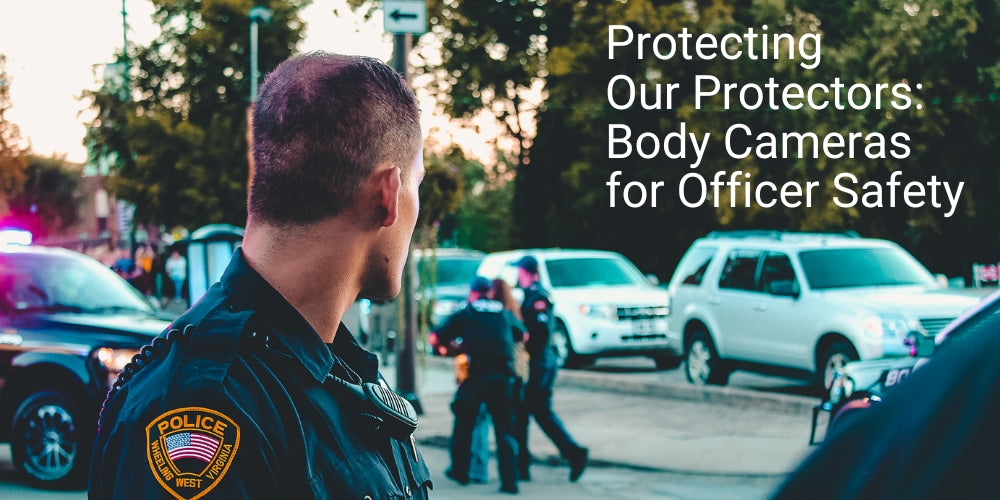Police officers are often regarded as our protectors, putting their lives on the line every day to ensure our safety and well-being. However, growing concerns about the safety of our protectors have become more prominent in recent years. The dangers of policing are numerous, and officers face significant risks that can lead to severe consequences. This is where body worn cameras come into play – a vital tool in enhancing the safety and accountability of law enforcement officers.
The Dangers of Policing
Policing is inherently a high-stress profession filled with risks. Officers encounter dangerous situations, violent criminals, and unpredictable environments regularly. According to the National Law Enforcement Officers Memorial Fund, 145 law enforcement officers died in the line of duty in 2020 alone. This alarming statistic underscores the urgent need for increased protection measures for our officers. Beyond the ultimate sacrifice, countless officers experience assaults, injuries, and psychological stress on a daily basis, making the case for improved safety measures even more compelling.
Body cameras: A Game-Changer in Officer Safety
Body worn cameras have transformed how law enforcement agencies approach officer safety. These small devices, attached to an officer's uniform or helmet, capture footage of interactions with the public, providing valuable evidence and enhancing accountability. Body cameras serve as a deterrent to potential aggressors, reducing the likelihood of violent encounters. They also offer an objective account of events, which can be critical in resolving disputes and clarifying incidents that might otherwise be mired in conflicting testimonies.
Benefits of Body worn cameras for Officer Safety
Improved Evidence Collection
Body cameras provide high-quality video evidence, which is crucial in investigations and court proceedings. This footage can help ensure that justice is served accurately and fairly, reducing the likelihood of wrongful accusations and aiding in the conviction of those who are guilty. The visual and audio recordings offer a more comprehensive understanding of events than written reports alone can provide.
Enhanced Accountability
Body cameras promote transparency, ensuring officers are held accountable for their actions. Knowing their actions are being recorded can encourage officers to adhere more strictly to protocols and professional standards, fostering a culture of accountability within police departments. This transparency can also enhance public trust, as communities see tangible evidence of officers' conduct and the efforts made to uphold ethical standards.
Deterrent Effect
The presence of body cameras can deter individuals from engaging in violent or aggressive behavior. Potential offenders are less likely to act out when they know their actions are being recorded and can be used as evidence against them. This deterrent effect can lead to safer interactions for both officers and the public.
Improved Training
Body worn camera footage can be used to identify areas for improvement in officer training. Reviewing real-life scenarios captured on camera can help trainers highlight what went well and what could have been handled differently. This practical approach to training can lead to more effective and responsive policing practices, ultimately enhancing officer safety and performance.
Reduced Complaints
Body cameras have been shown to reduce complaints against officers, promoting trust and building community relationships. When interactions are recorded, there is less room for misunderstandings or false accusations, leading to a decrease in the number of complaints filed. This reduction can alleviate administrative burdens and contribute to a more positive perception of law enforcement within the community.
Real-Life Example of Body-worn cameras in Action
De-escalation Training
In most countries, police departments use body camera footage to train officers in de-escalation techniques, resulting in a significant reduction in use-of-force incidents. By analyzing footage of previous encounters, officers can learn how to manage tense situations more effectively, reducing the likelihood of violence and improving outcomes for all involved.
Implementation and Best Practices
While body worn cameras are a vital tool in officer safety, their implementation requires careful consideration. Agencies must develop clear policies and procedures for body camera use, including:
Mandatory Activation
Officers should activate body cameras during all interactions with the public. This ensures a comprehensive record of encounters, leaving less room for selective recording or tampering.
Data Storage and Management
Agencies must ensure secure storage and management of body worn camera footage. Proper protocols must be in place to maintain the integrity and privacy of the recorded data, ensuring it is accessible for investigations and legal proceedings when needed.
Training and Support
Officers require training on body worn camera use, maintenance, and footage review. Continuous support and education on best practices are crucial to maximizing the effectiveness of body cameras and addressing any challenges that arise.
Conclusion
Body worn cameras are a crucial component in protecting our protectors. By providing valuable evidence, enhancing accountability, and deterring violent behaviour, body cameras play a vital role in ensuring officer safety. The integration of body cameras into policing not only helps protect the officers but also strengthens the trust and relationship between law enforcement and the communities they serve.
